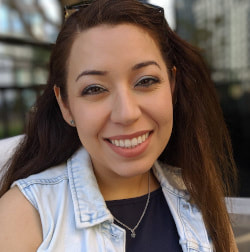Anaya is a bilingual Speech-Language Pathologist and doctoral candidate at The University of Texas at Austin's Speech, Language, and Hearing Sciences Department. Her research interests include language development and the assessment and treatment of Spanish-English bilingual children with language disorders.
Peña is a certified Speech-Language Pathologist and a Fellow of the American Speech Language Hearing Association. In the UCI School of Education, she serves as Associate Dean of Faculty Development and Diversity and directs the Human Abilities in Bilingual Language Acquisition (HABLA) Lab. Peña's research interests include bilingualism, language impairment, and test development and treatment. Abstract Research has investigated how lexical-semantic and participant factors impact word learning in young children and adults. However, limited information pertaining to expressive vocabulary development exists for school-aged bilinguals—particularly those with developmental language disorder (DLD). Cross-linguistic differences in the semantic characteristics of words may impact the types of cues available for constructing expressive vocabulary knowledge. To address this gap, we evaluated the relationships between intrinsic factors (age, language ability), extrinsic factors (L1 exposure), and word characteristics (e.g. imageability, concreteness) with item difficulty and expressive vocabulary knowledge in school-aged Spanish-English bilinguals with and without DLD. While we found similar patterns of associations between item difficulty and word characteristics across language ability groups, divergent predictive patterns emerged across languages and across ability groups. Educators supporting the development of bilingual students’ expressive vocabulary knowledge must account for not only cultural differences across students, but also characteristics inherent to words. Comments are closed.
|
Resources for:
|
|



